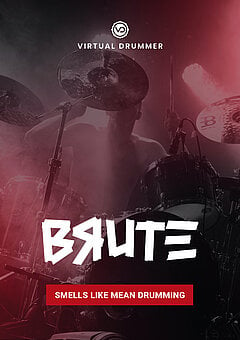Drum Layering Best Practices
Building powerful kicks and snares, choosing the right samples and creating a huge drum sound effortlessly.
JULY 23RD, 2022
This is just a quick overview of some of the best practices you can use to add fullness to your drums by layering:
Why layer drums?
Before you pull up additional samples or start doubling your drum tracks, there’s an important question you must answer first: Why do you want to use layering? Is it to decrease empty space, or perhaps add depth, variety and complexity to the groove? There are countless objectives you can achieve by layering beyond the ones just listed, and it’s critical to identify yours before you start. Oftentimes, layering can detract from the groove, adding clutter, removing the contours and making it more challenging to mix.
That said, there are plenty of cases where layering outperforms EQ, saturation or any other effects you throw at your drum buss, and this most often comes down to a single word: fullness. There are a number of ways to add fullness to your drums via layering, and in this article we’ll go over some best practices you can use to do it!
Snares
With electronic drums, the samples you’ll find are typically the byproduct of multiple layers and extensive processing, so if you want to add to them you’ll often have to take something away first. For snares, this could mean filtering out the highs and compressing the “body” of the sound to build the foundation, then adding onto it from there.
If you want more punch, try taking a different transient (the “click” at the beginning of a sample); this is a quick and dirty way to get the snare to cut through the mix, and there’s no shortage of source material you can use (other snares and kicks, keyboard clacking, even breaking or snapping different materials. Add in a clap sample if you want to fill out the mid and upper mid range, bringing in a “whooshing” sound in the process. For a broader, taller sound, layer a snare or white noise sample with a long tail or reverb, fade in the sample start and position it accordingly. Producer Sarah Feldman walks through a very effective approach to this organic style of layering in this video.
Everything immediately above is focused on reimagining the snare, but there are also times when you’ll want to use layering to add variety to the groove. In this case, a good play is to add very quiet sounds that subtly expand the timbre of the original sound — for example, a metallic hit with a ton of reverb. If you occasionally trigger this at the same moment as other snare hits, you get a bit more dimension out of the beat, but it will barely be noticeable, making the impact more psychoacoustic than it is practical. You can also be more obvious by layering elements that beef up certain hits, like extra claps, snaps and acoustic drum hits. This little bit of variety adds up in power very quickly!
Kicks
With kicks, layering needs to be much more subtle. The plugin Kick 2 does a very effective job of giving just the right type and amount of layering options — if you don’t own the plugin, it’s worth checking out some demos to see how it works (you can replicate nearly everything it does using stock plugins in Ableton live, and get pretty close with other DAWs as well). For the core sound of the kick, simply manipulate a sine wave falling precipitously in pitch and taper the release of the volume envelope. You can get tons of different sounds with this, but for the purposes of layering you can simply pick a very bare kick sound and juice it up using other samples.
One of the major keys with kick layering is to expand it slightly in time with new timbres. Try adding a closed hi hat as a kick topper, which will fill out the high end and give it a slightly longer release in the upper frequency range. You can try out a wide range of samples, including crackling twigs, metallic / wooden hits and foley recorded from a variety of household items. Layering multiple of these together (edited to be very short in length) will allow you to create a range of different kicks with very little work; or you can add this extra ear candy manually to certain hits to create variety throughout the groove, while keeping the beat consistent.
Acoustic drums
This approach is a bit different; if your drums were recorded and processed well or you use a powerful tool like UJAM’s Virtual Drummer series or a traditional, quality drum sample library, you won’t need to layer — but if you want to give things a more heavily produced or larger than life feel, you can get a lot more out of your drums by layering samples with your kicks and snares (toms, cymbals, hi hats are also candidates for this, but you’ll see the most mileage from layering on top of the “big 2” drum types). The key is to get the timing of the layers perfectly in sync with the acoustic groove, and mixing them to be a subtle accent. Ideally, they should be felt more than heard!
Of course, one way to do this is to manually sequence the kick and snare pattern on a drum rack plugin — while this certainly offers the highest level of control, it can be a cumbersome process to undergo. Another option that removes a tremendous amount of complication is to use a Virtual Drummer and a Beatmaker in conjunction, lock in the drum pattern first and Drag & Drop the MIDI from the Virtual Drummer UI into the Beatmaker track. Then, simply highlight the non-kick / non-snare notes and delete them; everything will be in perfect sync, and you can simply rotate through kits and samples until you have the perfect electronic drum layer for your acoustic drum kit!
Wrapping up
Layering is one of the most effective ways to give your drums more dimension and oomph — but it’s important to know when to reach for this tool and when to leave things as-is. Over-layering drums adds bloat to a mix and reduces its clarity, detracting from the final result ... but just the right amount, using the right samples, can give your drums a character you won’t achieve any other way!
As with many aspects of music production, this comes down to taste and practice. When in doubt, add a little extra something, and if it doesn’t work simply toss it. With a little practice you’ll get it under your belt in no time!
About the Author
Harry Lodes is a copywriter, marketing consultant and content writer for audio and ecommerce brands. He lives in the Philadelphia area, releasing Eastern/Western hybrid EDM under the artist name KAIRI hearkening back to his roots in Berklee College of Music.
Stay up to date
Sign up and we’ll send you an e-mail with product news and helpful stuff every now and then. You may unsubscribe at any time.
Defy Limits
We develop software solutions that enable people to create, consume and interact with music.




